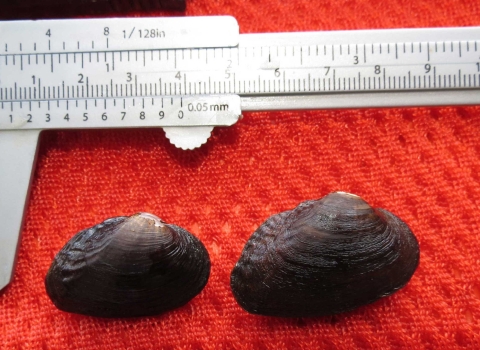The U.S. Fish and Wildlife Service today designated critical habitat for the Suwannee moccasinshell, a freshwater mussel protected as threatened under the Endangered Species Act (ESA) since 2016. The Service is also finalizing an economic analysis that assesses the potential impact of the Suwannee moccasinshell’s critical habitat designation on various sectors of the economy. The Service received no substantive comments during the public comment period, and there are no changes to the proposed units as published on November 27, 2019.
The Service is designating Suwannee moccasinshell critical habitat in three separate locations across approximately 190 miles of stream channel in Alachua, Bradford, Columbia, Dixie, Gilchrist, Hamilton, Lafayette, Madison, Suwannee, and Union Counties in Florida; and in Brooks and Lowndes Counties in Georgia. The designation does not include any terrestrial lands, only stream channels up to the ordinary high-water line. Land ownership adjacent to the critical habitat area consists of private (72%), state (27%), and county (1%) lands.
Based on the best available information, the Service estimates that the critical habitat designation will have an economic impact of less than $20,000 annually for the Suwannee and Santa Fe River units and less than $80,000 per year for the Withlacoochee River unit. The Withlacoochee River Unit’s higher economic effects result from efforts to avoid or minimize impacts to the Suwannee moccasinshell from planned transportation projects in that area.
The Suwannee moccasinshell was historically present throughout much of the Suwannee River Basin, including the Suwannee River mainstem, Santa Fe River sub-basin in Florida, and the Withlacoochee River in Florida and Georgia. This small freshwater mussel’s current range only includes the middle Suwannee River mainstem and the lower Santa Fe River. Recent surveys targeting the mussel indicate it has declined in abundance and range and that it may no longer inhabit the Withlacoochee River or upper Santa Fe River sub-basin.
The Suwannee moccasinshell’s decline results from the degradation of its stream habitats primarily due to polluted runoff from agricultural lands, pollutants discharged from industrial and municipal wastewater facilities and mining operations, decreased flows resulting from groundwater extraction and drought, and channel instability.
Designating critical habitat on federal or non-federal lands informs landowners and the public about specific areas important to the species’ conservation. Identifying critical habitat also helps focus conservation partners’ efforts, such as state and local governments, conservation groups, industry, and individuals, to recover endangered and threatened species.
Critical habitat designation does not affect land ownership, establish a wildlife refuge, reserve, preserve, or other conservation areas. The designation of critical habitat on private land has no impact on individual landowner activities unless federal funding, permits, or activities are involved. The regulatory implications of designating critical habitat apply to federal actions that involve a federal permit, license, or funding that may adversely modify critical habitat. If this is the case, the Service works with the federal action agency and, where appropriate, private or other landowners to amend the project so as not to adversely modify the critical habitat.
The critical habitat rule, economic analysis, and other supporting information, including public comments, are available here. In the Keyword box, enter Docket FWS–R4–ES–2019–0059, the docket number for this rulemaking. Then, in the Search panel on the left side of the screen, under the Document Type heading, click on the Final Rules link to locate this document.
For more information visit our Frequently Asked Questions.



